21+ Sample Safety Statements
-
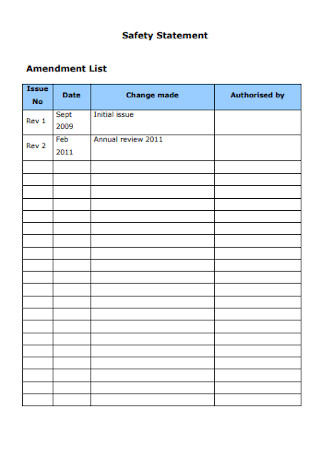
Safety Statement Format
download now -
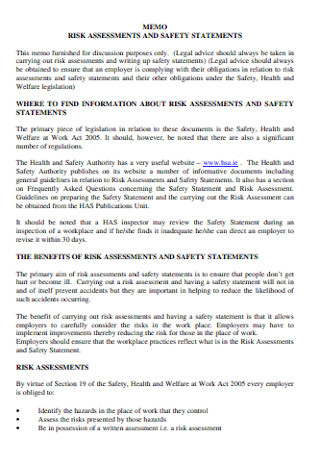
Risk Assessment and Safety Statement
download now -
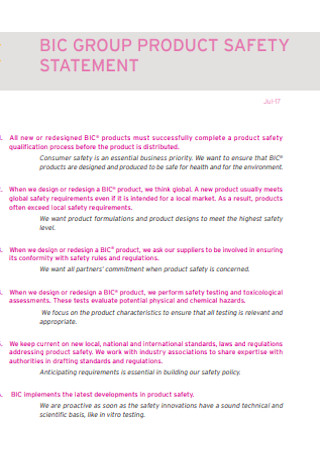
Product Safety Statement
download now -
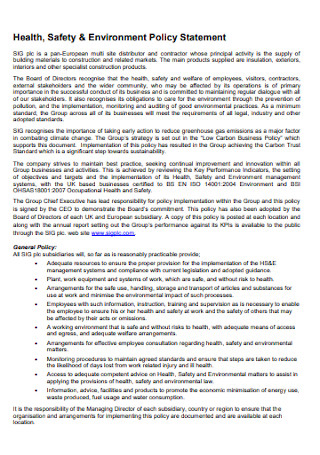
Safety and Environment Policy Statement
download now -
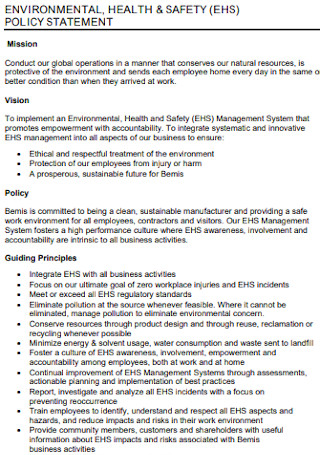
Safety Policy Statement
download now -

Safety Method Statement
download now -
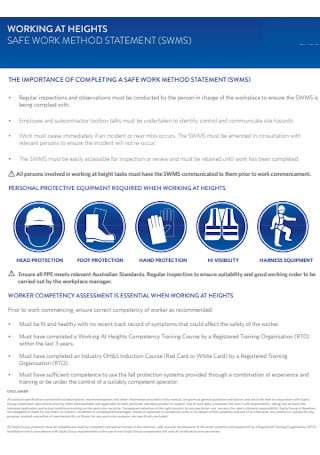
Safety Work Statement
download now -

Public Safety Vision Statement
download now -
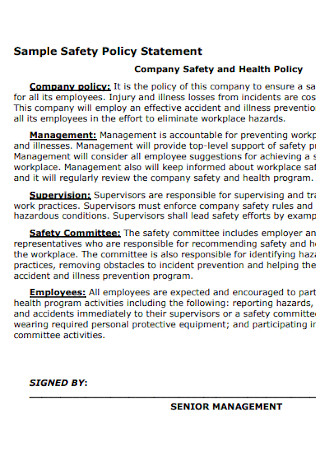
Sample Safety Policy Statement
download now -
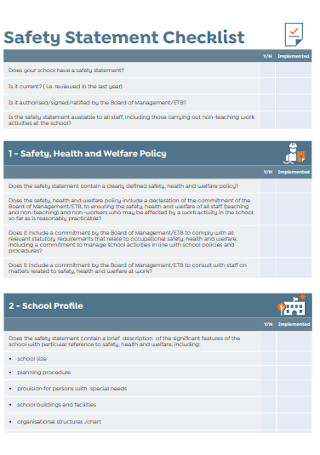
Safety Statement Checklist
download now -
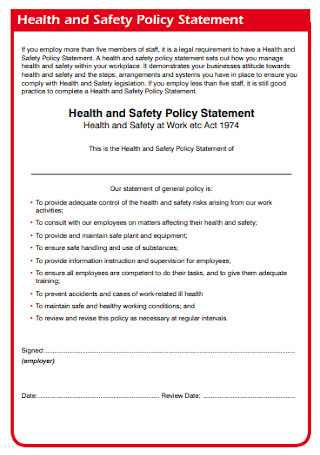
Health and Safety Policy Statement
download now -
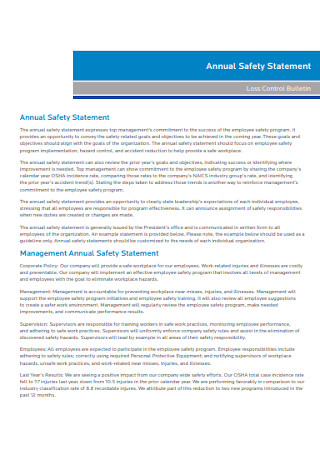
Annual Safety Statement
download now -
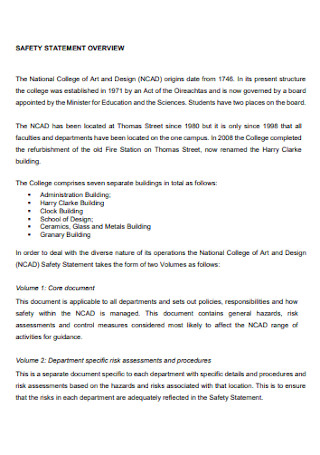
Corporate Safety Statement
download now -
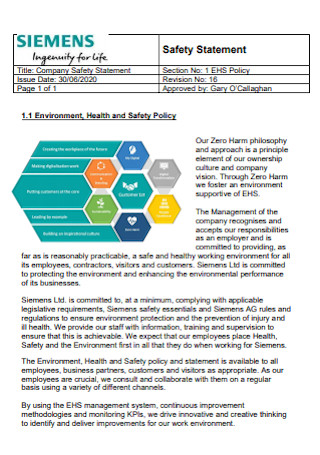
Company Safety Statement
download now -
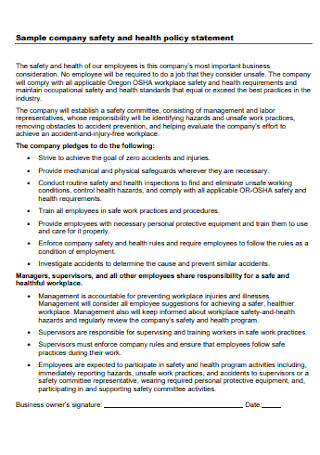
Safety and Health Policy Statement
download now -
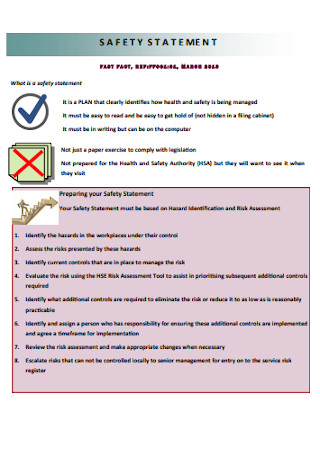
Basic Safety Statement
download now -

Fire Safety Statement
download now -
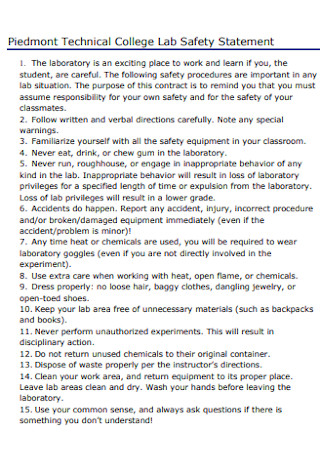
College Lab Safety Statement
download now -
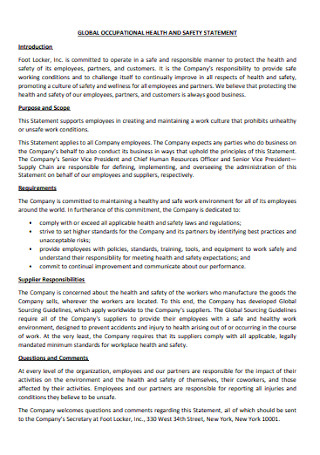
Occupational Health and Safety Statement
download now -
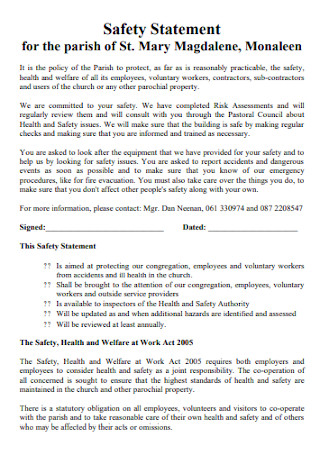
Simple Safety Statement Example
download now -
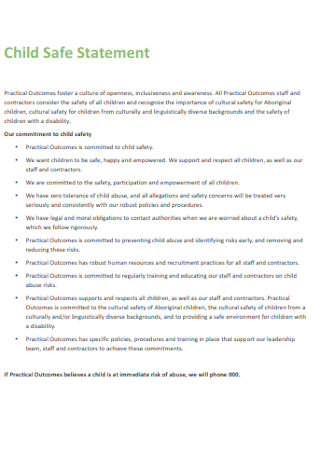
Child Safe Statement
download now -
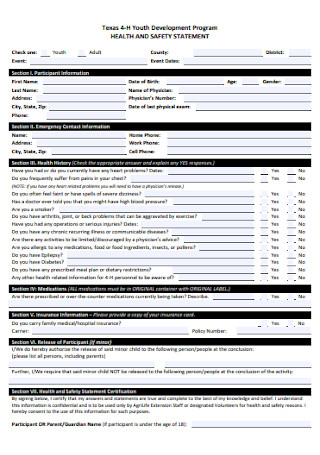
Standard Health Safety Statement
download now
FREE Safety Statement s to Download
21+ Sample Safety Statements
What Is a Safety Statement?
Components of a Comprehensive Safety Statement
How to Create Your Company’s Safety Statement
FAQs
How do you write a safety policy statement?
What is a site specific safety statement?
What are the five elements of safety culture?
What Is a Safety Statement?
A safety statement is a printed or written document detailing an action program that safeguards the health and safety of individuals in a workplace. Under the Safety, Health, and Welfare Act of 2005 in the Republic of Ireland, employers, self-employed individuals, and other persons operating offices and businesses must comply with preparing a safety statement. The essence of a safety statement centers on the principle that accidents and ill-health are foreseeable, making them preventable. The document serves as an action plan to control movement and processes within the organization to diminish the possibilities of work accidents. It also emphasizes that safety is manageable and that companies must initiate acquiring the security and wellness of their workers. It is an act of commitment from employers in taking care of their employees.
According to the International Labor Organization (ILO), regarding the Enormous Burden of Poor Working Conditions, about 2.3 million individuals perish from work-related circumstances and conditions yearly, including the six thousand work-related deaths. A record of 340 million occupational incidents and 160 million recorded ailments annually.
Components of a Comprehensive Safety Statement
Organizations must carry out the safety statements they create for the well-being of every personnel accounted for in the business. The contents of your safety statement must show a safety plan that helps prevent injuries, accidents, or diseases during their time in the workplace. Below are the essential components you must include in your safety statement.
How to Create Your Company’s Safety Statement
A safety statement provides your employees with a boost of trust and confidence, knowing that you are looking after their safety, health, and welfare in and out of the office. It reflects the organization’s commitment to keeping your employees safe along with the responsibility that comes with it. Below is a step-by-step guideline in creating a safety statement that can help your company adhere to statutory laws while keeping your personnel’s safety.
Step 1: Draw Up the Health and Safety Policy
The safety statement begins with a declaration committing to guarantee a safe and healthy workplace where employees can function without worrying about their environment. The declaration must also adhere to statutory compliances and demonstrate the overall safety and health performance, provide a structured framework, and company objectives relating to health, welfare, and safety. It must also state that the safety statement can undergo revision according to changes relevant in the present time. The introduction also indicates that employees must be aware of any changes to the document.
Step 2: Identify All the Site and Office Hazards
To secure the health and safety of individuals within a workplace is to identify possible dangers from machinery, materials, technology, chemicals, and even daily activities. There must be a record kept by management after the employer identifies all potential hazards. Remember to section the document to address specific locations and activities. It is also advisable to keep accounts of all work-related accidents, ill-health declarations, and insurance claims. It is also helpful to do annual inspections of offices that cover physical, chemical, health, biological, and human-caused hazards.
Step 3: Carry Out Necessary Risk Assessments
It is the duty of employers to carry out risk assessments for their organizations and keep a risk assessment report for documentation. In carrying out the risk assessment process, you can take advantage of using templates to help you with the process of identifying hazards within your company.
Step 4: Decide on the Necessary Precautions the Company Must Take
The risk assessment ensures that the preassigned precautions are working for the company. The organization must also adhere to all relevant laws and regulations to place appropriate safeguards. Guarantee that industry standards are in place when identifying precautionary measures for your company. The main goal of risk assessment is to remove or diminish the possibility of dangers occurring in the workplace.
Step 5: Document Your Findings
The safety statement must account for all critical information stemming from the risk assessment. Write down all hazards and essential conclusions to help lessen the occurrence of these dangers. Employers must share the information and findings from the assessment process. The document must also contain whether there is a retainment of the documentation.
Step 6: Review and Update the Program as Necessary
Remember that safety statements must stay relevant to the safety, welfare, and health provisions at all times. Implementation and observation of the safety statement must be an integral part of the daily tasks of employees. It is advisable to provide copies of the safety statement around the workplace. In cases of review and revision, it is necessary to communicate the changes to all employees in the organization, especially if it directly affects the health and welfare of individuals. The modifications include work processes, organizational structures, equipment and substance use, technical knowledge, related legislation, and standards.
FAQs
How do you write a safety policy statement?
Under the regulations of the United States Occupational Safety and Hazards Administration (OSHA), writing the safety policy statement emphasizes the company’s commitment to the safety of its employees and informs them that you accept the responsibility that comes with it. The tips mentioned by the OSHA include using their template and highlight that the safety of employees is of utmost importance and consideration for all actions and tasks of employees. OSHA also states that the statement must engage the reader and encourage them to read through the policy. It is also necessary to keep it concise and emphasize the objectives of creating the policy statement.
What is a site specific safety statement?
A site-specific safety plan is a document containing necessary procedures covering the hazards with higher possibilities of occurrence. The site-specific safety statement opens up the site-specific safety plan and details the objectives of creating the safety plan for a worksite. These are usually tailored to fit a specific project and location. The site-specific safety statement gives a brief introduction of the contents of the site-specific safety plan, and it must guarantee that on-site workers read the document thoroughly.
What are the five elements of safety culture?
Safety culture is more than just identifying processes and procedures. It is the behavior, attitudes, beliefs, and values of individuals within an organization. The five elements ensure that valuing safety and taking care of each other within the workplace is never a chore.
- Leadership – Start with providing and demonstrating exemplary behavior from the leaders and managers.
- Responsibility – Responsibility means the shared belief that each person acts on their own volition to ensure that fellow employees and everyone around are safe from harm.
- Accountability – It is critical to take accountability for everyday actions and activities, influencing their environment.
- Clear Expectations – In achieving company expectations, there needs to be clear communication with all its members. The commitment to achieving these goals must start from the top down.
- Ethics – Ethically driven management processes develop a strong safety culture. It establishes that employees make decisions that are ethically and morally sound.
A company cannot function in its peak performance if employees fear for their safety within the confines of the organization. It is the employer’s responsibility to make their workers feel secure to perform daily activities and duties. A safety statement enables your employees to have a sense of security, knowing that management is putting their safety, health, and welfare are of utmost priority. Also, remember that your safety statement must include company objectives that coincide with state regulations. Comply with laws and instill a safety culture in your organization. Download and use the safety statement samples above for your convenience!
